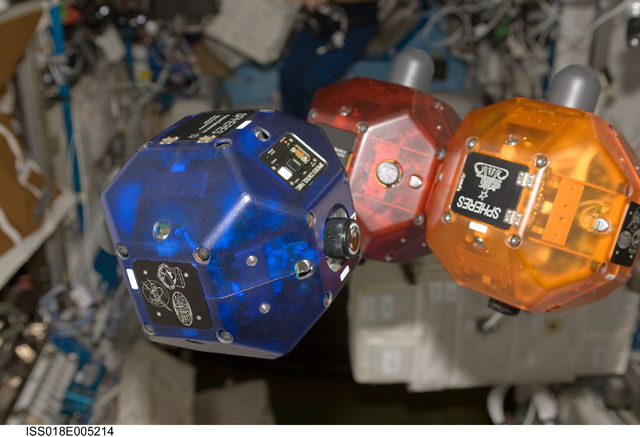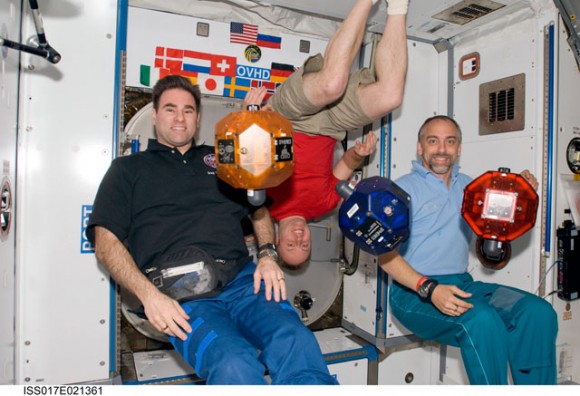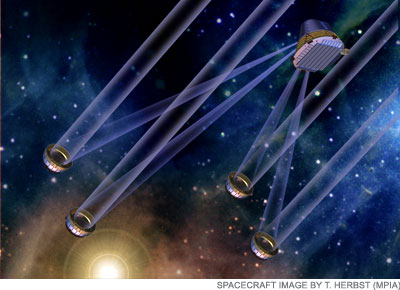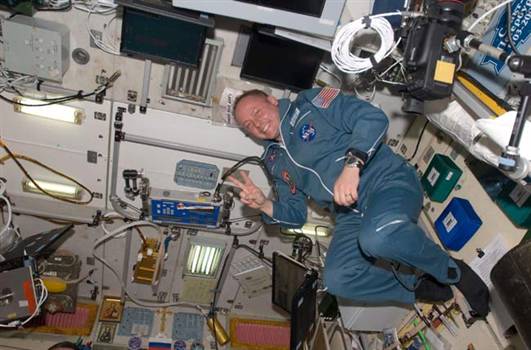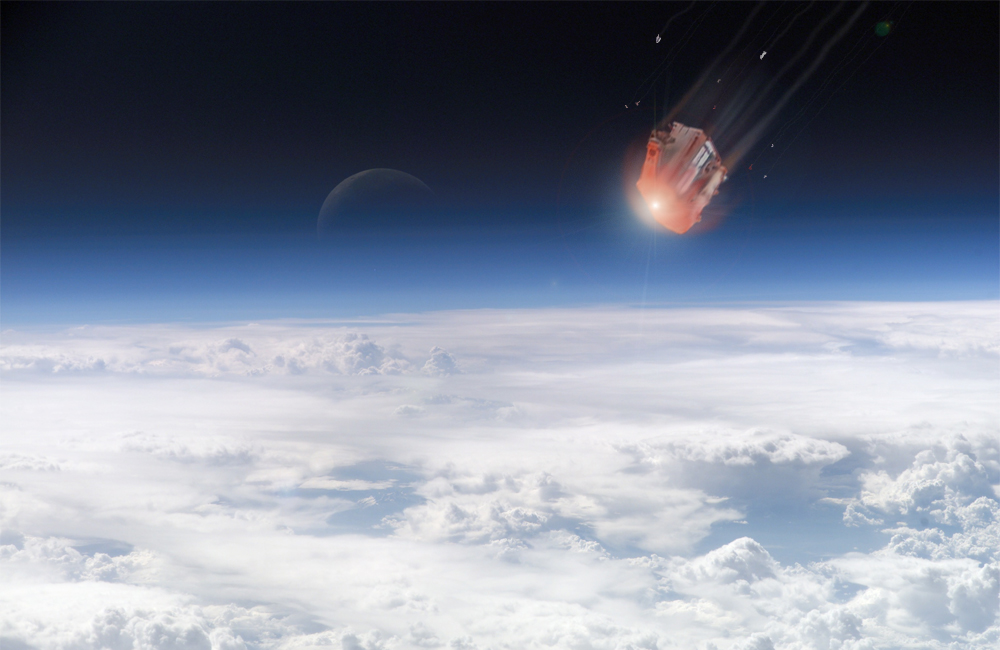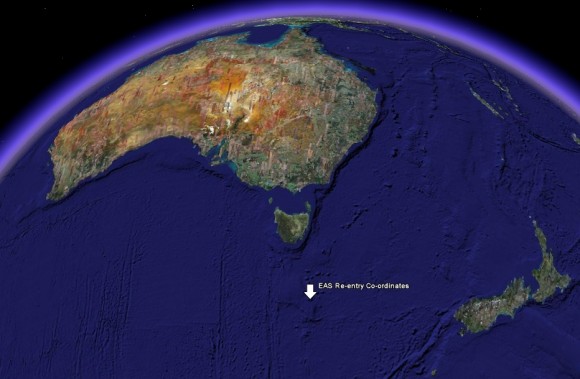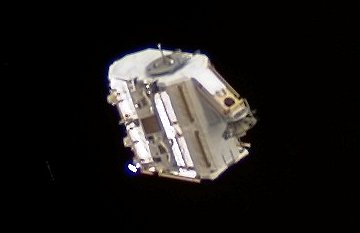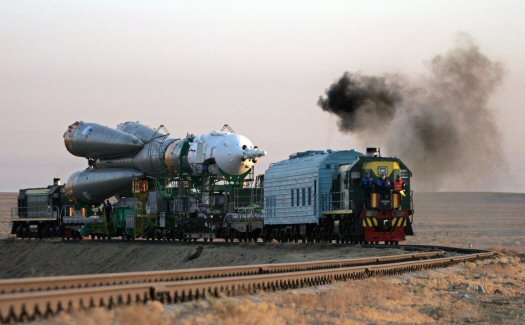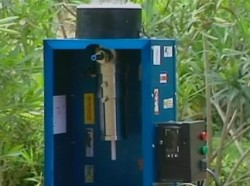[/caption]
Astronauts on the crew of STS-126, scheduled to launch on space shuttle Endeavour on Friday, Nov. 14 will be doing some big home improvement projects on their visit to the International Space Station. This mission will allow the ISS to double its crew size, as well as making sure there will be enough power for everyone living on board the orbital outpost. “It’s the most jam-packed logistics module we have ever carried up there,” STS-126 Commander Chris Ferguson said. “We’re taking a three-bedroom, one-bathroom house and turning it into a five-bedroom, two-bathroom house with a gym.”
The major additions are extra sleeping compartments, another bathroom, specialized workout equipment, a state-of-the-art water recycling system, and a refrigerator. But spacewalking astronauts will also attempt to clean up a malfunctioning SARJ – the Solar Alpha Rotary Joint that allows the station’s solar arrays to constantly track the sun. The huge mechanism hasn’t worked right for more than a year, and astronauts will clean up metal shavings from grinding parts, replace the trundle bearing assemblies and add special lubrication. It’s a big job, and will take four spacewalks to complete, including adding lubrication the port side SARJ, which has been working fine. But NASA doesn’t want to take any chances.
So astronauts will be busy both outside and in at the station during the mission, which will bring 14,500 lbs of supplies and equipment to the ISS.
“We’re going to use up a lot of the new space that we’ve brought up on the past few missions, with Node 2 and Columbus and the Kibo module,” lead shuttle flight director Mike Sarafin said. “The six-person crew is an important step toward utilizing the space station to its full capability.”
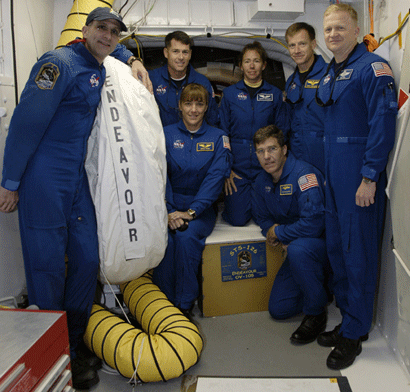
The crew includes: Christopher Ferguson, commander, Eric Boe, pilot, Sandra Magnus, Stephen Bowen, Donald Pettit, Robert (Shane) Kimbrough and Heidemarie Stefanyshyn-Piper.
But in addition to fully utilizing the space station, the equipment brought up will allow the space station to start depending less on the space shuttle. A new regenerative environmental control and life support system will give the station the ability to recycle urine and the condensation that the crew breathes into the air into pure water that can be used for drinking or to cool the station’s systems.
Endeavour’s commander, Christopher Ferguson, considers the water system the single most important piece of equipment that he’s delivering. It’s important for when the shuttle fleet is retired in 2010, and its water deliveries dry up. But Ferguson said the benefits go beyond the space station.
“This is really it, and it has no parallel. I would challenge you to find any other system on the Earth that recycles urine into drinkable water. It’s such a repulsive concept that nobody would even broach it. But that day will come on this planet, too, where we’re going to need to have these technologies in place, and this is just a great way to get started.”
“Up until this point, the majority of the station’s drinking water was coming up from the shuttle or the Russian’s Progress vehicle,” Sarafin said. “This sets us up for long-term sustainability of the station without the shuttle.”
Nobody will be drinking the water generated by the system just yet – an onboard purity monitor needs to be checked out and multiple water samples must be analyzed by scientists on the ground first. To get that water sample home as quickly as possible, Endeavour’s crew will take a shot at getting the system hooked up before they leave.
Here’s more info on the urine-to-water system.
The new additions to the space station will be a good way to mark the 10th birthday of the International Space Station on Nov. 20 – 10 years after the first station module was launched into space and construction began.
“We’ll be transitioning to true utilization and setting up for six-person crew at that 10-year bench mark,” Sarafin said. “It’s been a tremendous international effort to get to this point, and I can’t think of a better way to celebrate it.”
Source: NASA, Houston Chronicle



